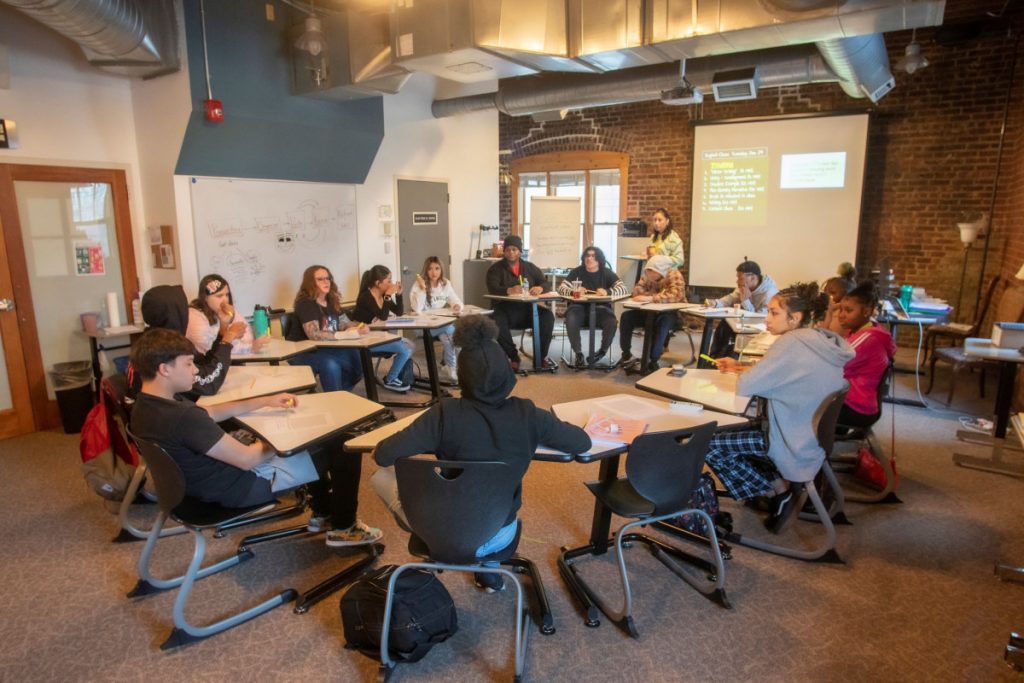This week, the Colorado Department of Education released graduation rate data for the class of 2020, trumpeting the good news that rates rose to the highest level in a decade, despite the global COVID-19 pandemic.
While that news is worthy of celebration, I am deeply skeptical about the data’s validity. And I am not alone. In fact, the data and the accompanying press release carry an unfortunate whiff of spin and happy-talk at a time when we should instead be trying to assess the impacts the pandemic has had on student learning.
The press release quotes Education Commissioner Katy Anthes saying: “History will look back at this generation of children and marvel at their perseverance and dedication. A rising graduation rate and a falling dropout rate are wonderful accomplishments, especially during these tough times.”
The numbers certainly look impressive on the surface. The state dropout rate fell to an all-time low of 1.8 percent. The graduation rate climbed to 81.9 percent, up 9.5 percentage points since 2010. The four-year graduation rate for students of color for 2019-20 was 77.1 percent, an increase of 1.6 percentage points from the previous year.
Here’s the problem as I see it. This could all very well be a mirage. How do we know that last year’s graduation rates are anchored in reality?
In conversations I’ve had with educators across several districts, I have heard repeatedly that disruptions caused by the pandemic led many teachers to pass students along, assuming that if they stayed on the rolls, they should graduate.
If that’s true, then of course graduation rates would rise and dropout rates would fall. It’s basically a free pass for the second semester.
It’s important to bear in mind that this is transpiring after about eight years of schools raising the standards for what Colorado students should know and be able to do with the new high school graduation guidelines. These guidelines are supposed to go into effect for the class of 2021 but many schools have been slowly ramping up in anticipation of these “more rigorous” standards as envisioned back in 2007.
Far too many Colorado students continue to graduate from high school unprepared for work or college. The most recent numbers available suggest about one third of graduating high school students are unprepared for higher education.
CDE should not compare 2020 graduation data to prior years, given that there were nearly three months of little or no school in the spring. CDE can not credibly assert that 2020 data is better than 2019 or 2018; they are different data sets reflecting starkly different conditions.
We really do not know how graduation rates increased or decreased, because there have been no audits or accountability regarding graduation in 2020. This problem will almost certainly continue into 2021.
Finally, I find it highly suspect that graduation rate data for groups of students like those who qualify for Title 1 services (low-income) are up significantly, given how much we’ve heard about these students lacking access to computers and high-speed Internet. It is mind-blowing that CDE would suggest that “the increase in graduation among students living in poverty could be linked to the variety of options and academic pathways Colorado districts offer students, including opportunities for more experiential learning.”
All of this raises questions once again about what constitutes Colorado’s standard for graduating from high school. Is it seat minutes? What students are able to demonstrate they know and can do?
Finally, what’s the point of a senior year if kids in 2020 did better with three fewer months of schooling? Should we rethink what the senior year is and maybe shift those funds to early childhood education, a move that has been suggested for decades?
CDE owes its schools, Colorado families, and the public at large better than this. It serves no one well, to release information of such dubious quality, even if it does make the department look good on the surface.
Ultimately, this does little more than damage CDE’s credibility. How disappointing.




